by Enrico Maria Davoli
Vittorio Acquati, born in 1997, lives and works in Sesto San Giovanni (MI). After attending the Academy of Fine Arts in Brera, he started an original activity in the field of woodworking; a mobile sawmill linked to a carpentry and turning activity of original objects. In this context, the dimensions of making and design are closely intertwined, and the skills of the craftsman become one with those of the designer. The mobile sawmill works on demand, from the procurement to the cutting and storage of wood, intervening in urban spaces where its presence is needed. From potential waste, the wood recovered and then processed becomes the raw material that gives shape to Vittorio's design thinking. His design is an example of simple and harmonious contemporary decorum, sensitive to material and light. Anything outside the formal dictates implicit in the various tree essences is excluded. Everything that speaks of the vitality of matter and the technical processes that govern and transform it, is an integral part of it. Acquati's is a lesson in empirical culture (and authentically sustainable design) which favors facts over theories, wits over pre-established theses. Images accompanying this interview are from Vittorio Acquati's Facebook and Instagram pages: www.facebook.com/vittorio.acquati www.instagram.com/vittorioacquati/ www.instagram.com/lasegheriaimbruttita/
Seeing you at work, one imagines that you have a rigorous course of study behind you, but also a lot of groundwork in the practical field, grappling with tools and machines to use and implement based on your needs. How would you summarize the stages of your educational journey?
My training in woodworking began with the Istituto Tecnico “Giuseppe Meroni” in Lissone (MB), one of the few schools offering a specific course for the wood and furniture sector. There I learned the basics of carpentry, experimenting with the machines, processes and materials used in today’s furniture production. Especially in the last years of the course, I acquired different skills thanks to internships and labs. Thanks to an internship with a restorer, I began to take an interest in solid wood, a material rarely used in carpentry today and unknown in school. At the same time, during a visit to another woodworker’s workshop, I saw the lathe at work, a machine I had never used before and which is used almost exclusively to work solid wood. After buying a lathe, I began to make simple objects such as bowls, pendants, lamps. The use of the lathe led me to change my perspective on woodworking from one primarily related to the production of furniture, where the material is adapted to functional needs, to one where the material is the medium around which objects are elaborated. After graduating from “Giuseppe Meroni”, I temporarily put aside my job opportunities in order to pursue a course of study that would help me acquire the design skills I still lacked. So I decided to enroll in the design course at the Brera Academy. During the three-year course at Brera, I had the opportunity to focus on the history of art and industrial design, studying the most famous objects and the social and industrial contexts in which they were created. Unfortunately, I never had the opportunity to analyze them in their proportions and production methods. At the same time, I began to devote myself to the mobile sawmill, about which I will speak in a moment.
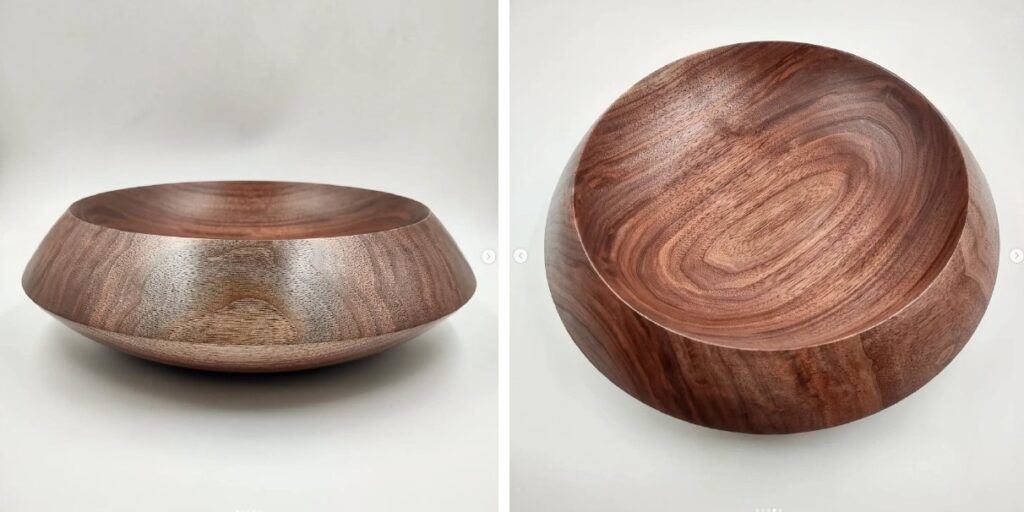
You belong to the generation of artisans 2.0, whose creativity and independence characterize the current design scene. But usually the idea of contemporary craftsmanship is associated with the use of computers, 3D printers and virtual processes. You, on the other hand, work with a raw material, wood, whose production chain you follow from the beginning. How did you come up with the idea of setting up a mobile sawmill?
The main difference between solid wood and modern materials is that, while many of the latter are engineerable and thus adaptable to the design and manufacturing methods chosen (making them suitable for processing with modern machines such as 3D printers or machining centers), the former have a series of unavoidable constraints, both in design and in realization. For a designer using modern materials, the realization of the object is merely the concretization of an idea, to be transposed as faithfully as possible. For me, on the other hand, the design of an object derives from the mechanical, dimensional and aesthetic characteristics offered by a particular type of wood. On the basis of these, combined with the possibilities of the machine, I hypothesize a form. The mobile sawmill is a fundamental machine for me. It allows me to recover local wood, or even wood that is not commercially available, and work it according to the specific needs of a project. All this while experimenting with sizes and types of cuts that commercial lumber producers could not offer for cost reasons.
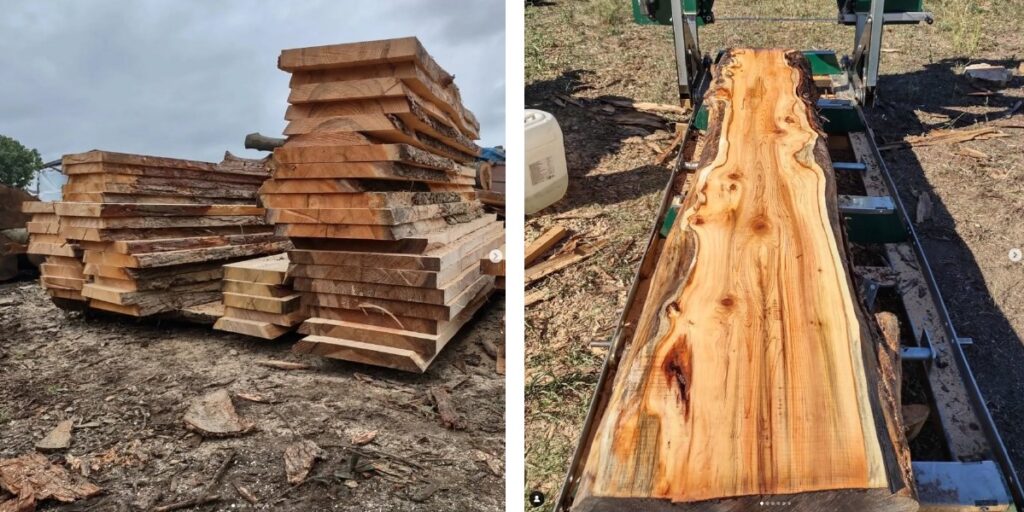
Watching you at work, cutting slabs from reclaimed logs, it is clear that you do not consider this phase to be merely preliminary, but that it already has a very clear qualitative and creative dimension. What criteria do you use to prepare the raw material, both for yourself and for others?
I love this question because the relationship between the commercial formats in which lumber is sawn and the design possibilities they offer the designer is something that is completely overlooked by both designers and primary fabricators. Wood is a material that has undergone considerable innovation over the past two centuries, from the invention of veneer to the development of derivative panels such as MDF, plywood, OSB and particleboard. However, few suppliers and designers seem to be aware of the relationship between wood species, the types of lumber that can be made from them, and the products that can be made from them. Looking at today’s landscape, it is striking how the woodworking industry has gone from producing dimensional lumber (a methodology that allowed the exclusion of natural wood defects and the selection of the fiber arrangement within a sawn timber) to producing simple tangential log sections, whose only virtue is to present generous dimensions and to preserve those defects that, in a distorted logic, give an appearence of naturalness and ecology to the objects made from them. In fact, this trend is erasing a thousands-year old cultural background, matured in times when man had to be very familiar with wood in order to use it in the most intelligent way, and only the skill of the craftsman could compensate for the lack of machinery. One of the objects that best represents the traditional philosophy regarding the preparation of the material is the chair. Traditionally, the elements that make up chairs, such as the Windsor chairs of the british tradition, were carved directly from the log, often by splitting. This seemingly rudimentary technique actually produced stronger elements than those that could be obtained from a board sawn with today’s systems, since split elements have greater continuity in the fiber than those made by sawing the fibers apart. Nevertheless, the main characteristics I take into account when preparing to saw a log are the following: the type of wood (from the point of view of the stability of the sawn timber), the size of the log for the purpose of its best use, the regularity of the grain and the classical uses envisaged for that particular type of wood.
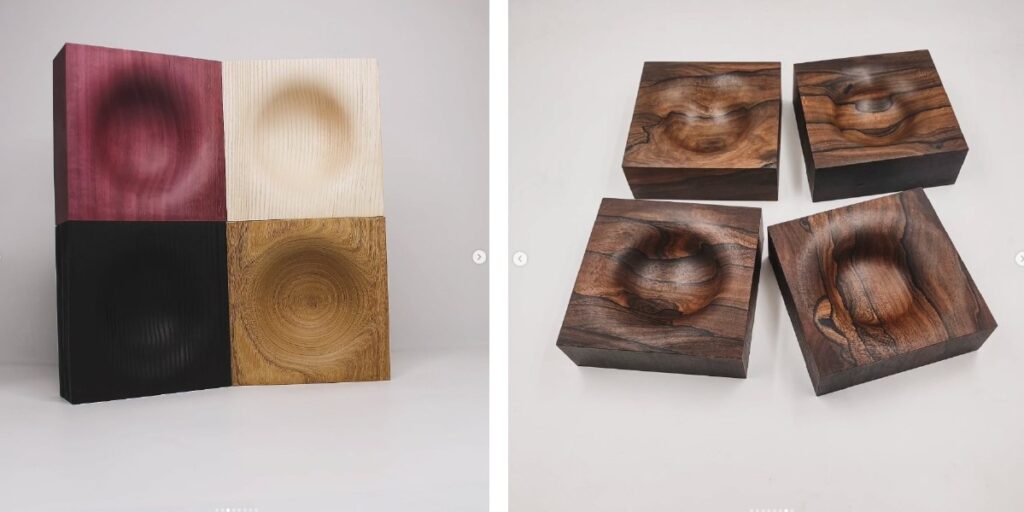
Wood is a fundamental material that accompanies the entire history of mankind. What is the artistic, aesthetic and technical dimension you attribute to it that makes you prefer it to all others? Are there any essences that are particularly dear to you?
The main reason I prefer wood to other materials is that it is the only truly sustainable material, since the trunk from which the wood is made is merely a by-product of the tree’s growth cycle. This is even more true when it comes to urban wood, which is otherwise destined for the landfill, and which I salvage with my mobile sawmill project. On a technical level, wood is a good compromise in terms of workability compared to harder materials such as metal or stone. It is also workable in a finished form without further processes such as firing, as is the case with clay and glass. In addition, wood can be used to create a wide variety of objects that few other materials allow. From an artistic-aesthetic point of view, wood offers an infinite number of textures and surface finishes that, combined or used individually, allow for the most diverse chromatic and tactile effects. The woods I prefer to work with are generally classic european woods, both hardwoods and softwoods, which offer optimal workability compared to many exotic species. Perhaps the species I am most fond of is Lebanon cedar, one of the most widespread ornamental trees in Lombardy. It is a clear example of the value that urban trees can have in the production of opera wood.
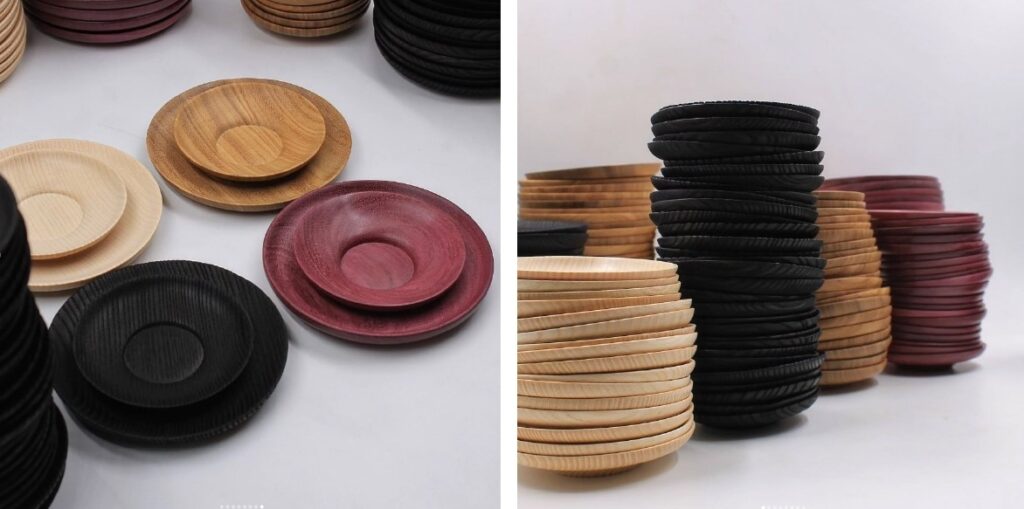
The wooden objects you create are characterized by a clean and concise design, filtered through an idea of classicism that, in the field of industrial design, is shaped by diversified experiences in time and space, passing through several cultural traditions: from scandinavian to american to japanese. Can you describe your product line in more detail, including the market niches for which you produce them?
The objects I make on the lathe are born in the ideational stage, observing the type and size of the material I have at my disposal, with the aim of making the most of it, especially when it comes to objects that can be made of unseasoned wood, such as bowls or vases. The affinities of my work with the above-mentioned stylistic traditions are due to the fact that I, too, look for essentiality in the object and its components, preferring simple forms that can be designed with respect to the possibilities of the material and the machines, and that can be produced exclusively with traditional working methods. Also for these reasons, my designs have no specific target market. A significant part of my work is related to commissions, for which I provide preliminary technical advice and take care of the realization.

In terms of invention, how do you develop your designs? Do you refine the prototype by working directly on the material with machine tools, or do you also use graphic designs, and to what extent?
The invention process often begins with a desire to experiment with a technique that is new to me, such as steam bending, multi-axis, multilaminar. Once I have determined the possibilities and limitations of a particular technique, I figure out what shapes can be made with it, and therefore what objects it might be interesting for. In the process of developing the shape, I use graphic CAD programs to define the details of the shape or to check possible variations of it without having to make a prototype, as well as to create templates and working drawings.
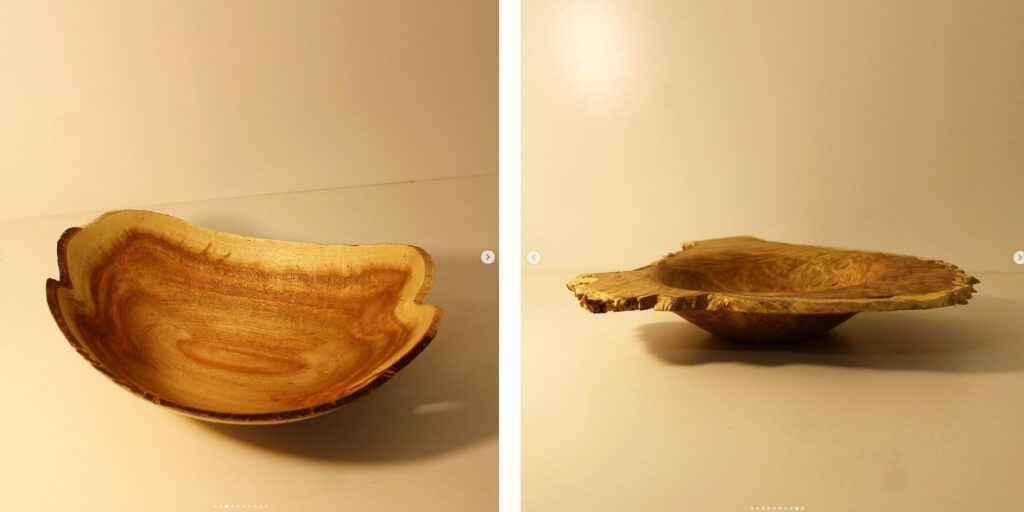
Looking at your objects, one wonders which artistic personalities have influenced your approach to design, in terms of direct inspiration or even just suggestion. Can you tell us about them?
I draw a lot of inspiration from the international world of woodturning, which is very diverse due to the different techniques it is divided into. On the other hand, as far as the production of furniture and accessories is concerned, outside the sphere of woodturning, I follow with interest many exponents and schools of Modern Fine Woodworking, a design and production philosophy that combines knowledge of traditional material and working techniques with a clean design that enhances the technical beauty of construction elements such as joints and the selection and juxtaposition of different wood species. When I look at the history of design, the story that strikes me the most is certainly that of Michael Thonet. This is not so much because of the originality of the objects as such, but because of his ability to exploit and correctly apply the knowledge of steam bending available at the time, and to develop a form on this basis that is as iconic as it is congenial to production.
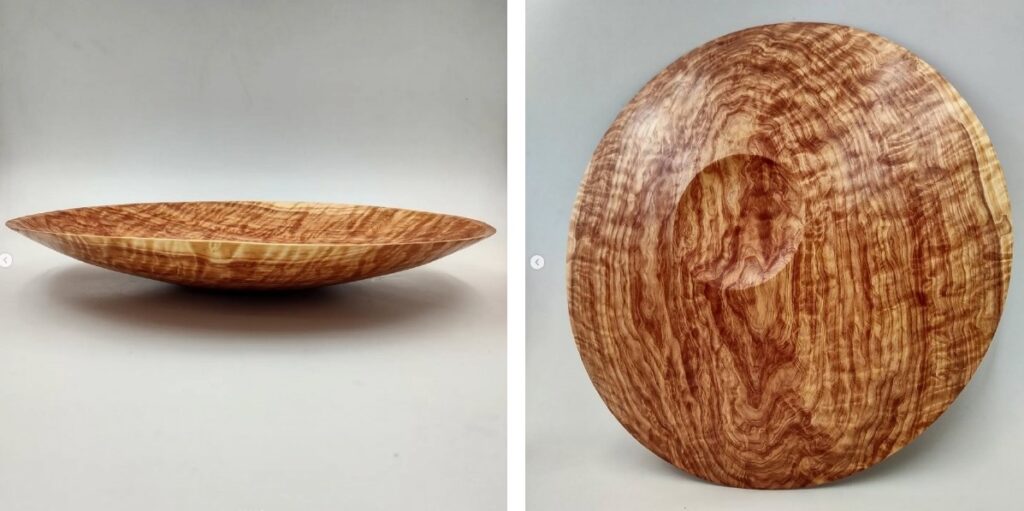
On your part, at least superficially, there is no specific interest in ornamental aspects, as an embellishment (by carving or inlay or other techniques) to be superimposed on the primary form of the object. But the textures, symmetries, and dialectics of solids and voids show that you are also very attentive to the ornamentation of objects, to their ability to enter into a dignified dialogue with their surroundings. What can you say about your relationship to the ornamental experience?
As far as the ornamental aspects are concerned, in the objects I make I mainly work on enriching the elements of the form. I like to create articulated forms, such as those obtained by multi-axis turning, and for surface decoration techniques I prefer the natural grain of the material, all the more so when it is marked.
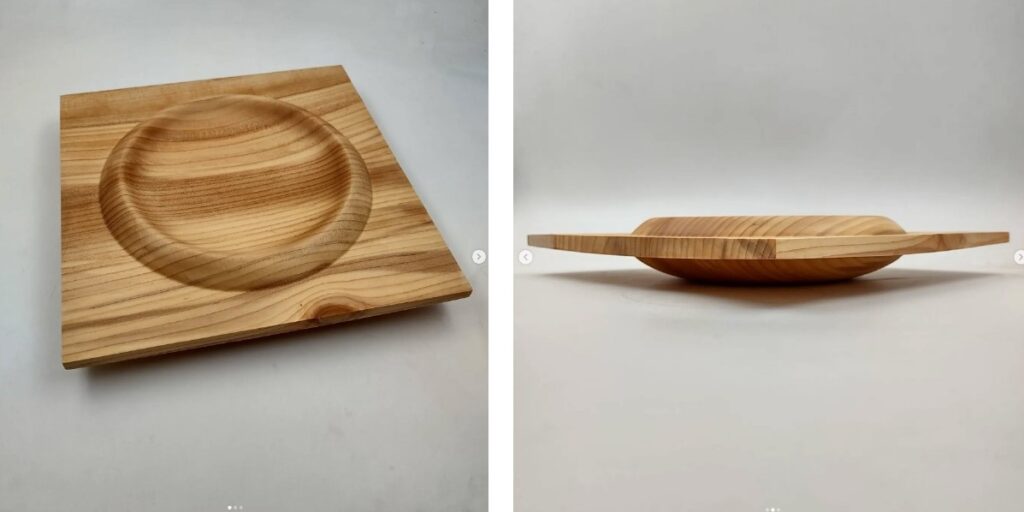
Are there any modes of expression (in terms of materials, technologies, spatial constraints, or anything else) that you would like to explore in the future?
Right now I am interested in finding new ways to combine the techniques I have experimented with. Moreover, among those I already use, there are some that I think still have a lot to offer my projects, such as steam bending. On the other hand, the confrontation with other wood and design professionals always offers me new impulses that might bring me closer to forms of expression not yet explored.
Homepage: Vittorio Acquati, Paulonia fruit bowl, 2023 (photo credits Vittorio Acquati). Below: Vittorio Acquati, Robinia burl jewelry box, with wenge lid and boxwood knob, mix of live edge and non-edge with exotic and local wood, 2020 (photo credits Vittorio Acquati).



